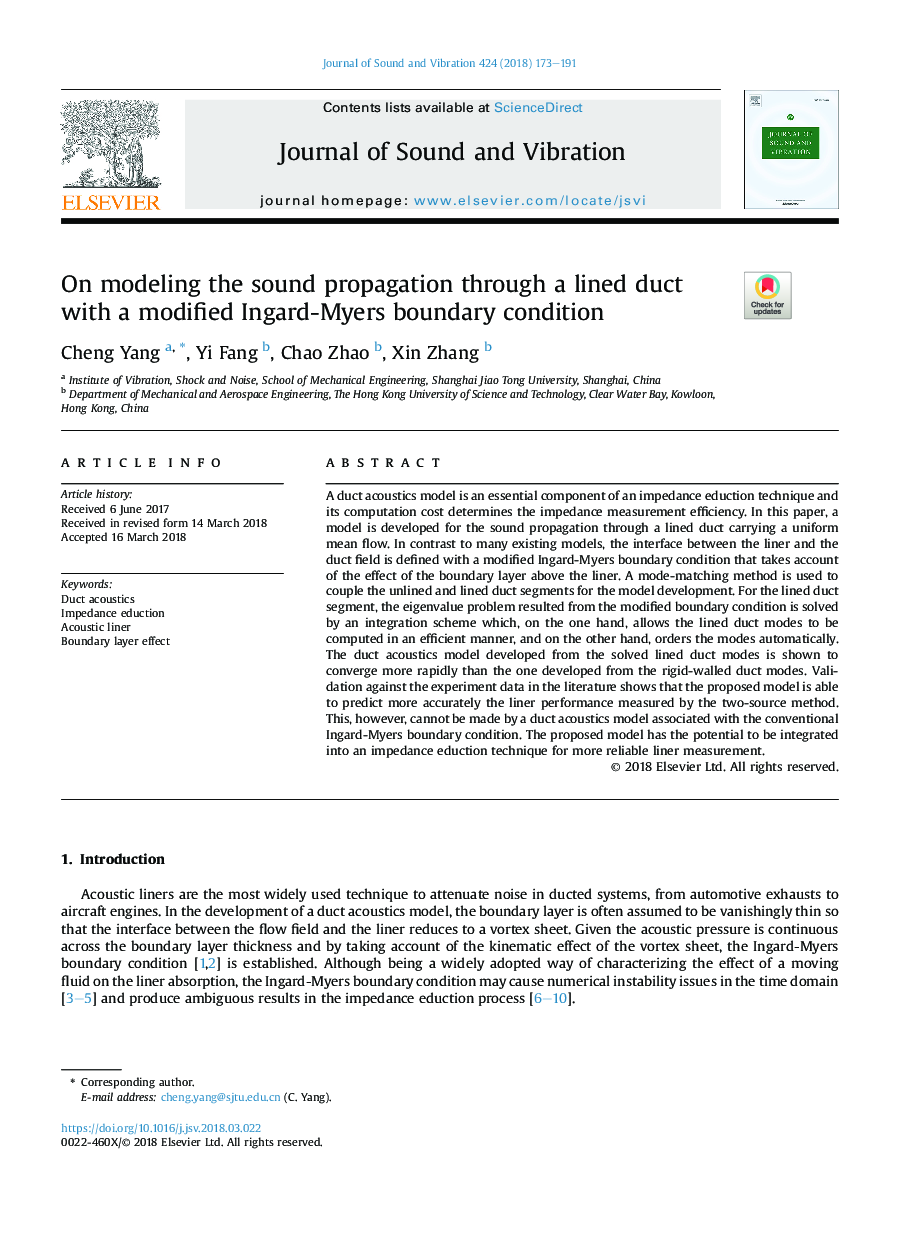| Article ID | Journal | Published Year | Pages | File Type |
|---|---|---|---|---|
| 6753204 | Journal of Sound and Vibration | 2018 | 19 Pages |
Abstract
A duct acoustics model is an essential component of an impedance eduction technique and its computation cost determines the impedance measurement efficiency. In this paper, a model is developed for the sound propagation through a lined duct carrying a uniform mean flow. In contrast to many existing models, the interface between the liner and the duct field is defined with a modified Ingard-Myers boundary condition that takes account of the effect of the boundary layer above the liner. A mode-matching method is used to couple the unlined and lined duct segments for the model development. For the lined duct segment, the eigenvalue problem resulted from the modified boundary condition is solved by an integration scheme which, on the one hand, allows the lined duct modes to be computed in an efficient manner, and on the other hand, orders the modes automatically. The duct acoustics model developed from the solved lined duct modes is shown to converge more rapidly than the one developed from the rigid-walled duct modes. Validation against the experiment data in the literature shows that the proposed model is able to predict more accurately the liner performance measured by the two-source method. This, however, cannot be made by a duct acoustics model associated with the conventional Ingard-Myers boundary condition. The proposed model has the potential to be integrated into an impedance eduction technique for more reliable liner measurement.
Related Topics
Physical Sciences and Engineering
Engineering
Civil and Structural Engineering
Authors
Cheng Yang, Yi Fang, Chao Zhao, Xin Zhang,
